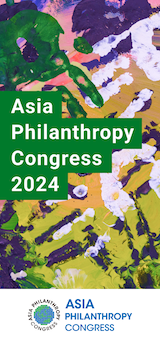Massive civic protests have accompanied the crises unfolding before and after the October 7th attacks. They started shortly after the latest Netanyahu government’s attempted Judicial Reform (known by many as a judicial coup due to its intention to weaken the independence of Israel’s judiciary) was announced in January 2023. The protest movements changed in nature after the massacre of October 7, 2023, and the ensuing war in Gaza and hostilities in Northern Israel.

Protesters in Tel Aviv demand early elections and a deal for the release of the hostages held by Hamas in Gaza in August 2024. Photo by Amir Goldstein shared courtesy of Orni Petruschka.
Before October 7, many Israelis feared that the foundations of democracy were in peril. The size and intensity of the protests were unprecedented in Israel’s history, and also massive in terms of Western democracies. Hundreds of thousands of Israelis participated on a weekly basis, with many even participating almost daily in various creative protest activities. Many existing and ad-hoc organisations organized the various activities, but some common functions, most notably funding, were undertaken by a central body called the Resistance HQ, with which I was involved.
A centralised infrastructure and fundraising enabled the protest and resistance organisations to concentrate on field activities. It also helped donors avoid having to deal with multiple applicants. They could donate to a central place, knowing that there was an experienced team that used its expertise, skills, strategic vision, and discretion to allocate funds for the various protest activities.
Like many Israelis concerned about the judicial coup, Israeli philanthropists were part of a first wave to respond. They saw the need to support and participate in massive protests. Funds supporting the civil struggle for democracy flowed to the Resistance HQ at a sufficient rate, enabling it to carry out all the activities that required monetary assistance. The main sources of funds were:
- Crowdfunding based on relatively small donations from tens of thousands of Israelis, which collectively brought in considerable sums;
- Significant donations from Israeli major donors. Despite the traditional reluctance to engage with politically controversial topics, the sense of fear for Israel’s future caused many affluent Israelis to donate significant amounts;
- Over time, Jewish donors from abroad, who cared about Israel’s democracy, gradually understood the gravity of the situation and were impressed by the intensity of the unprecedented resistance, and joined Israelis in funding.
The resistance to the judicial coup was successful in preventing the enaction of the laws intended to weaken Israeli democracy. However, the massacre of October 7 proved, horrifically, the very things that the protest organisations had warned of repeatedly: that the coup, the government’s smug obtuseness, and the attempted enactment of dictatorship laws propounded by the extreme right-wing government was weakening Israel itself: the IDF, the economy, foreign relations, the resilience of the Israeli society, and more.
The October 7 massacre also brought protest to an end as the resistance organisations changed their focus and mobilised immediately to deal with the severe national crisis that began that day. They filled the vacuum left by the state in the aftermath of the massacre. The protest organisations demonstrated their organisational and logistical capability, volunteer spirit, and patriotism by transforming to become aid organisations for victims of the massacre including families of the bereaved, families of hostages, and families of people who had been evacuated or wounded.
The protest organisations created a logistical aid system in dozens of areas providing an immediate response to needs as they arose. Particularly outstanding was Brothers and Sisters in Arms, an organisation of reservists from units of the IDF, who established an intricate and comprehensive assistance infrastructure for victims. Even after the state’s institutions eventually organised for the state of emergency, Brothers and Sisters in Arms remained the key group helping people affected by the massacre and the war, including evacuees, bereaved families, and the families of the hostages.
Other resistance organisations, including the Resistance HQ, set themselves a new goal: to overthrow the Israeli government both for its role in weakening Israeli democracy, and for their failures to stop the October 7 massacre – multiple failures before, during, and afterward. As this piece is being written, almost a year after October 2023, the government has curtailed any discussion regarding realistic goals for the war. They jeopardise any deal for to the release of the hostages just to preserve its right-wing coalition by prolonging the war, knowing people are reluctant to act against it while war continues.
In the months after October 7, anti-government protests remained on a much smaller scale compared to the peak days of the protests against the judicial coup in 2023. It was evident that the pain, grief, and sorrow of loss – as well as anxiety over the war itself – did not allow the rage to erupt. But the protests have intensified in recent months, almost to the size of the pre-October 7 scale.
The same was true of donations. Funding to the anti-government protests was reduced significantly compared to pre-October 2023, as the natural sentiment of Israeli and Jewish donors was to assist the Israeli victims of the war – the families of the hostages in Gaza, the evacuated families, the wounded and more, and contributions went to support these causes.
In parallel, rallies to support the hostage families, calling for the government to make a deal for the hostages’ release, have increased in size and intensity. Since hostages’ release deal required the cessation of the war, at least temporarily, to which the Israeli government objected, the rallies have escalated to real protests. In recent weeks, they have combined with general resistance to the government to create huge protests, with the participation of close to half a million people. These protests are based in part on the financial and logistical infrastructure of the resistance organizations which pre-dated October 7.
It should also be noted that due to its highly sensitive nature, which requires the government’s cooperation by advancing a deal to secure the release of hostages, the issue of the hostages is separate from the effort to bring down the government.
There are many lessons to learn from the formidable effort of the liberal-democratic portion of Israeli society. The way it has challenged a government that is hostile to its values, the mobilisation of civil society and the support of Israeli philanthropy are just some. Hopefully, the brave Israelis responding to the multi-faceted crisis will be able to save Israel from itself.
Orni Petruschka is a leading Israeli tech entrepreneur, philanthropist and activist.
This article was published as a part of a series of pieces exploring Jewish and Israeli philanthropy’s response to October 7. Read the series here.






Comments (0)